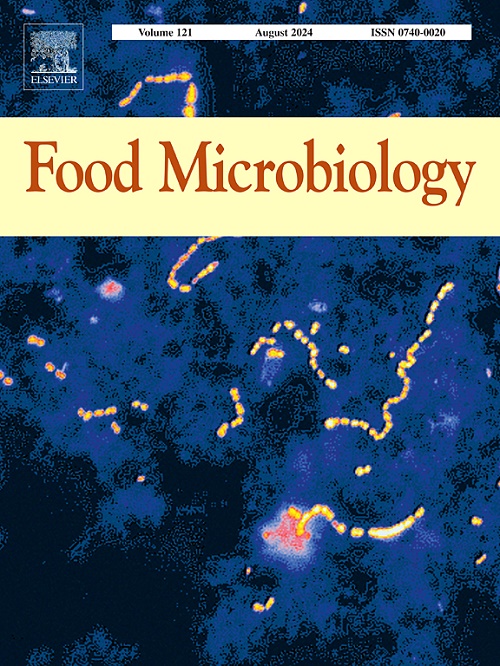D-tagatose biotransformation from lactose by lactase and recombinant Bacillus subtilis expressing l-arabinose isomerase, and the product separation, purification and crystallization
IF 4.5
1区 农林科学
Q1 BIOTECHNOLOGY & APPLIED MICROBIOLOGY
引用次数: 0
Abstract
d-Tagatose is a low-calorie rare sugar with notable physiological benefits. The recombinant Bacillus subtilis expressing L-arabinose isomerase (LAI) was constructed and used together with lactase for biotransformation of d-tagatose from cheap substrate of lactose. Under optimum conditions, 45.6 g/L d-tagatose was produced from 200 g/L lactose, achieving a conversion yield of 0.228 g d-tagatose/g lactose. d-Glucose produced by lactose hydrolysis was removed by anaerobic fermentation with Saccharomyces cerevisiae. Subsequently, the sugar solution containing d-galactose and d-tagatose was decolorized by using powdered activated carbon, desalinated by anion and cation exchange resin beds, and separated by chromatographic column, resulting in decolorization rate of 95.5 %, desalinization rate of 93.8 % and d-tagatose solution purity of 97.9 %. Finally, the separated d-tagatose solution was concentrated and crystallized, resulting in d-tagatose crystals with 99.9 % purity. In summary, this paper establishes a complete bioprocess for d-tagatose from lactose catalyzed by using recombinant B. subtilis and lactase. The methods developed in this study show promise for mass production of food-grade d-tagatose from the inexpensive substrate lactose.
利用乳糖酶和表达l-阿拉伯糖异构酶的重组枯草芽孢杆菌将乳糖转化为d -塔格糖,并对产物进行分离、纯化和结晶
塔格糖是一种低热量的稀有糖,具有显著的生理益处。构建了表达l -阿拉伯糖异构酶(LAI)的重组枯草芽孢杆菌(Bacillus subtilis),并将其与乳糖酶一起用于从廉价乳糖底物转化d-塔格糖。在最佳条件下,200 g/L乳糖可制得45.6 g/L的d-塔格糖,转化率为0.228 g/ g乳糖。采用酵母厌氧发酵法去除乳糖水解产生的d-葡萄糖。随后,采用粉状活性炭对含d-半乳糖和d-塔格糖的糖液进行脱色,用阴离子和阳离子交换树脂床进行脱盐,用色谱柱分离,脱色率为95.5%,脱盐率为93.8%,d-塔格糖溶液纯度为97.9%。最后对分离得到的d-塔格糖溶液进行浓缩结晶,得到纯度为99.9%的d-塔格糖晶体。综上所述,本文建立了一个利用重组枯草芽孢杆菌和乳糖酶催化从乳糖中提取d-塔格糖的完整生物工艺。本研究中开发的方法表明,从廉价的底物乳糖中大规模生产食品级d-塔格糖是有希望的。
本文章由计算机程序翻译,如有差异,请以英文原文为准。
求助全文
约1分钟内获得全文
求助全文
来源期刊

Food microbiology
工程技术-生物工程与应用微生物
CiteScore
11.30
自引率
3.80%
发文量
179
审稿时长
44 days
期刊介绍:
Food Microbiology publishes original research articles, short communications, review papers, letters, news items and book reviews dealing with all aspects of the microbiology of foods. The editors aim to publish manuscripts of the highest quality which are both relevant and applicable to the broad field covered by the journal. Studies must be novel, have a clear connection to food microbiology, and be of general interest to the international community of food microbiologists. The editors make every effort to ensure rapid and fair reviews, resulting in timely publication of accepted manuscripts.
 求助内容:
求助内容: 应助结果提醒方式:
应助结果提醒方式:


